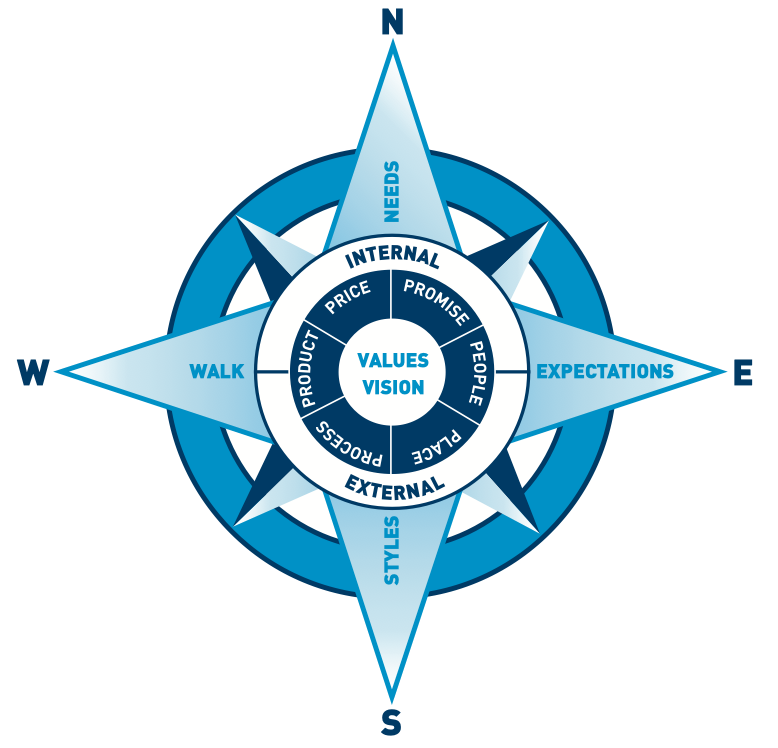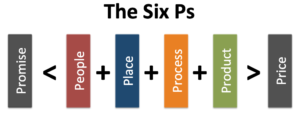Our book, Lead With Your Customer, features this key model:

The World Class Excellence Model™ demonstrates how the best companies become–and stay–the best by connecting the dots between a compelling customer brand and creating a high performing employee culture. The model shows what great organizations focus on:
Understanding Customers. The entire model is fully embedded in the customer experience. The best organizations define customers not only as those you serve externally, but also as those you serve internally–your employees. The model represents this through the analogy of a compass. The compass rests on directional points, just as the compass of customers–which includes the following:
Needs: Five essential human needs drive all customers in making decisions.
Expectations: Identifying the perceptions and stereotypes people have of your offering.
Styles: Four key approaches for handling customers.
Walk: There’s no substitute for walking in the shoes of your customer.
The Core: Values and Vision. To best navigate the process, begin at the center of the model and radiate out, building on each concept and, in turn, providing strategic and tactical alignment (and integrity) for the entire organization.
Values–World-class organizations identify and develop clear values/beliefs and priorities so that everyone can contribute effectively. Well-crafted Values direct the operational alignment and help the organization to be consistent. Once properly integrated, these operational guidelines determine how you accomplish your Vision.
Vision–Much more than a typical collection of words, a legitimate vision is a concise declaration of your organization’s purpose in relation to your customers. It creates a strong brand image as well as a dynamic corporate culture.
Once the core has been established, world-class organizations focus on six key methods of implementing business success known as the World Class Benchmarking Six P’s:
Six P’s. These concepts are the methods that all world-class businesses use to consistently deliver operational excellence. The Six P’s provide guidance for both the external customer experience and for the internal operations. They are as follows:
Promise: What the company promises your experience will be like whether you are a customer or an employee. That means you must take the integrity of those promises seriously.
People: Those who provide for the customer. In an organization, everyone engages his or her customer, because customers are external and internal.
Place: Any physical or virtual location where the customer experiences that service. This is the customer domain.
Process: The policies, rules and procedures that provide for the customer experience. As such, they must support making it easy to do business with your organization.
Product: The item or service customers need. Here, the lesson is to provide the best of what they really want.
Price: What the customer pays in time, effort, and money. Those true costs, both tangible and intangible, determine value.
The People, Place, Process and Product must live up to the Promise, and be well worth the Price–shown with the 6 P’s Customer Formula:
Promise < People + Place + Process + Product > Price
This formula results in loyalty and the sustainable competitive edge that you want. Real world-class organizations consistently deliver on these fundamental components of the customer experience–and consistently reap the benefits.
External and Internal Experience--Great organizations don’t focus on “moments” of service. They focus on the entire customer experience–both externally and internally.
Ultimately, the World Class Excellence™ Model influences the value of the organization itself–whether private or public sector. Whoever the stakeholder may be, the true value is best measured in how it supports the long-term success of the operation.
Please order your copy today at Amazon, and get tips on how to lead with your customers and take your business to the next level.

